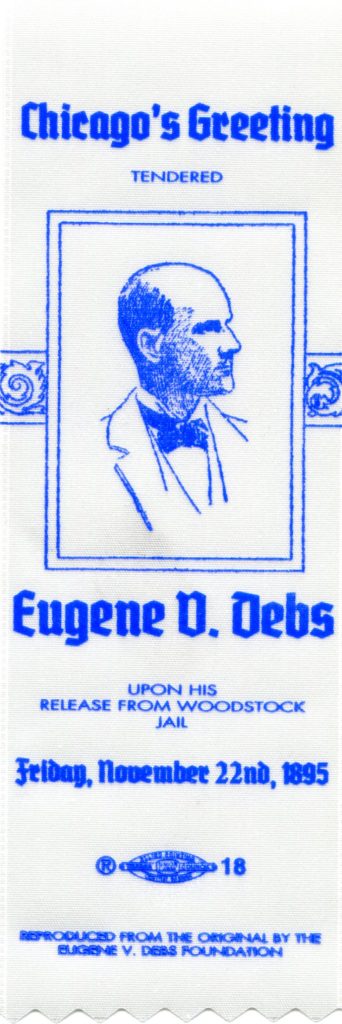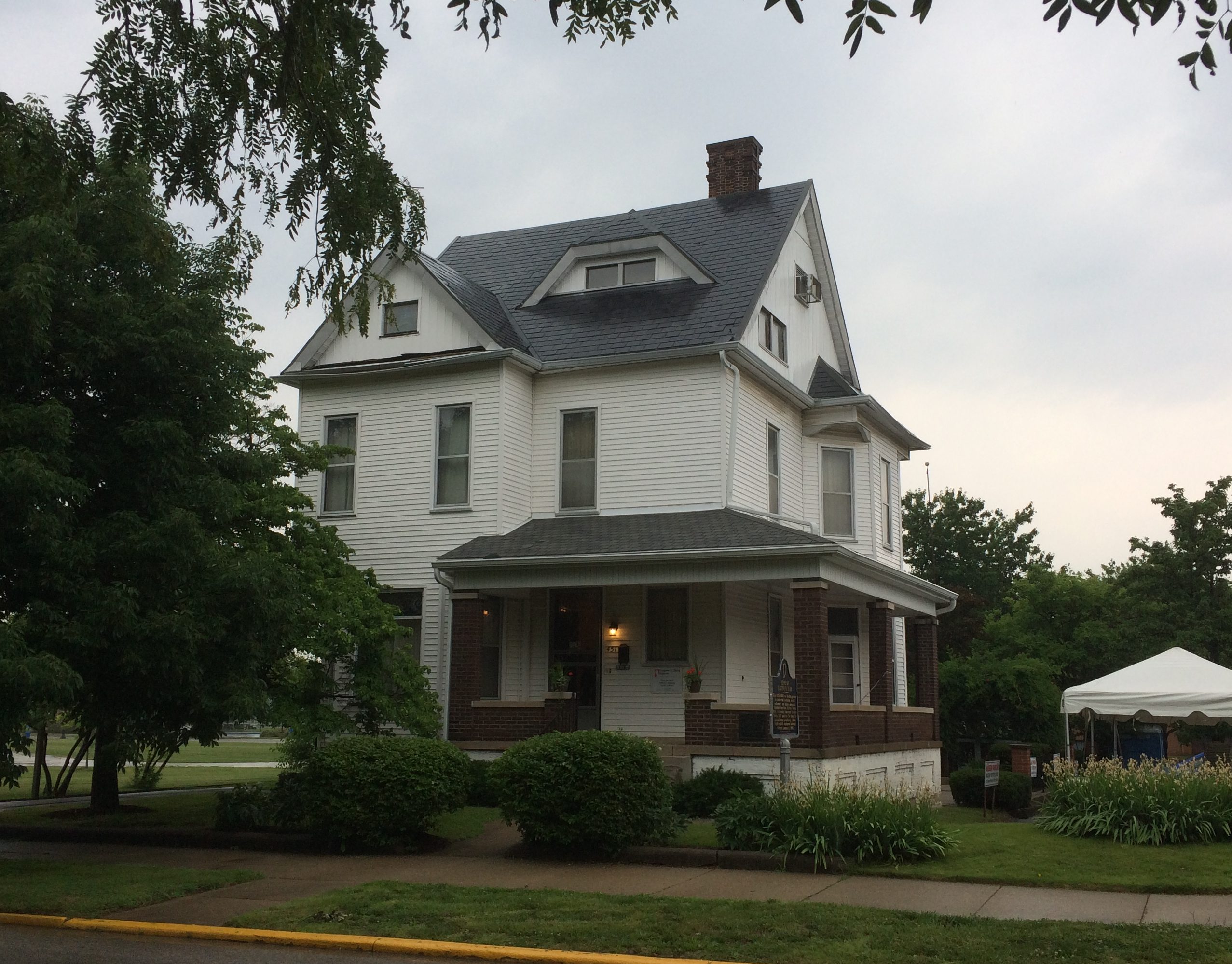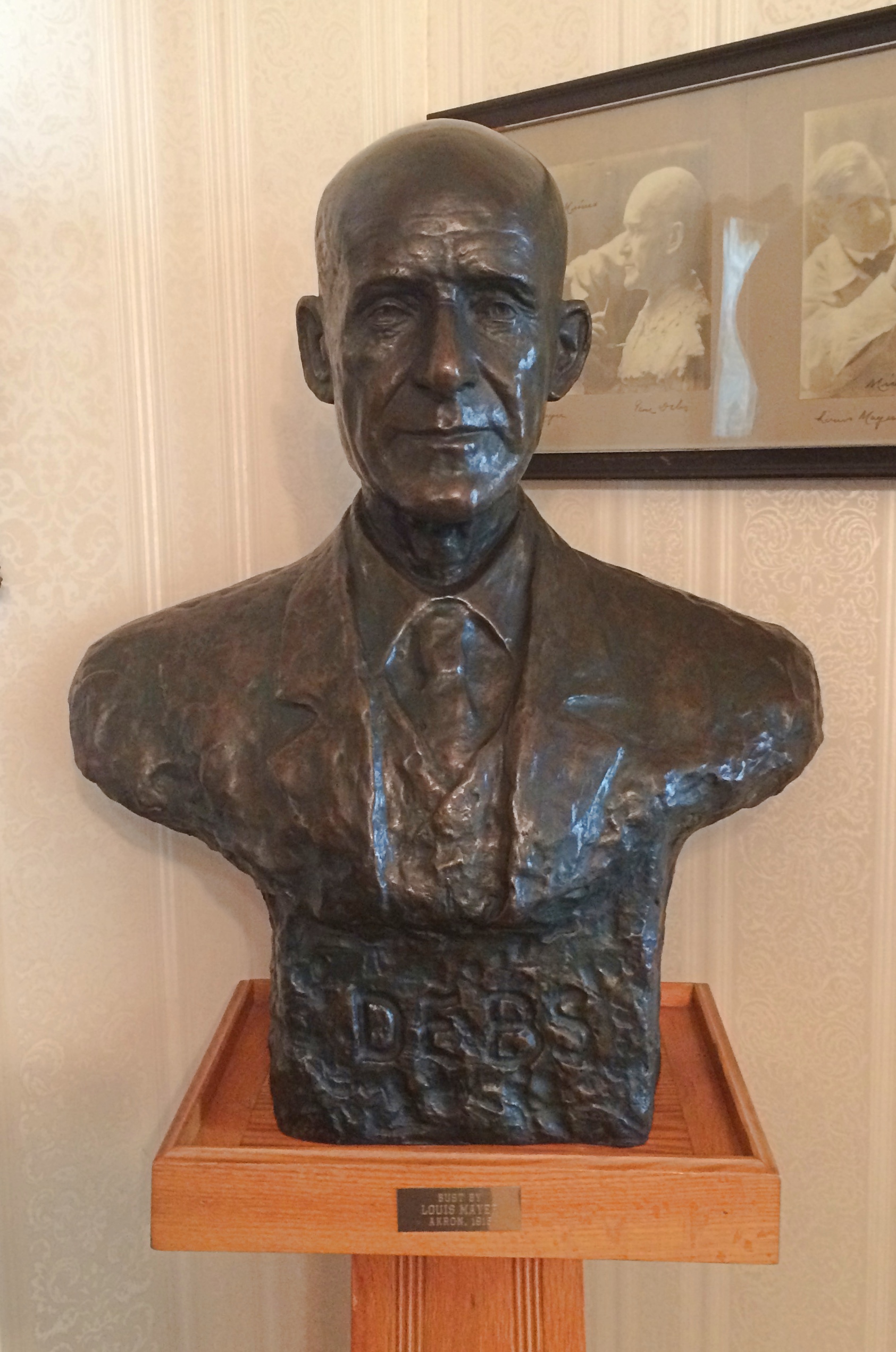Tucked away among the buildings and open fields of Indiana State University in Terra Haute is a structure from the Gilded Age, but also associated with the golden age of socialism in the United States: the Eugene V. Debs House.
We arrived in the mid-afternoon on Saturday, in time to take a detailed tour from an exceptionally knowledgeable guide, but not for an event earlier that day in honor of the 125th anniversary of the Pullman Strike.
Debs led the strike, of course, and for his trouble was tossed in the McHenry County Jail in Woodstock, Illinois, for six months — an event that radicalized him. After he got out, his commitment to socialism never wavered.
The museum’s event involved a book signing of a new volume about the Pullman Strike — The Edge of Anarchy: The Railroad Barons, the Gilded Age, and the Greatest Labor Uprising in America by Jack Kelly — and a reading of “Liberty,” the speech that Debs delivered to a crowd of thousands of supporters in Chicago after his release from Woodstock Jail, on November 22, 1895.
It was a speech I’d never read, so I looked it up later. Credit to Debs for giving good speeches in an era when political discourse hadn’t yet been dumbed down to semiliterate 280-character bursts. A couple of selections:
“Out of range of the government’s machine guns and knowing the location of judicial traps and deadfalls, Americans may still indulge in the exaltation of liberty, though pursued through every lane and avenue of life by the baying hounds of usurped and unconstitutional power, glad if when night lets down her sable curtains, they are out of prison, though still the wage-slaves of a plutocracy which, were it in the celestial city, would wreck every avenue leading up to the throne of the Infinite by stealing the gold with which they are paved, and debauch Heaven’s supreme court to obtain a decision that the command ‘thou shalt not steal’ is unconstitutional…
 “I remember one old divine who, one night, selected for his text George M. Pullman, and said: ‘George is a bad egg, handle him with care. Should you crack his shell the odor would depopulate Chicago in an hour.’ All said ‘Amen’ and the services closed.
“I remember one old divine who, one night, selected for his text George M. Pullman, and said: ‘George is a bad egg, handle him with care. Should you crack his shell the odor would depopulate Chicago in an hour.’ All said ‘Amen’ and the services closed.
“Another old sermonizer who said he had been preaching since man was a molecule, declared he had of late years studied corporations, and that they were warts on the nose of our national industries, — that they were vultures whose beaks and claws were tearing and mangling the vitals of labor and transforming workingmen’s homes into caves.”
The museum staff was giving away souvenir ribbons, replicas of the ribbons worn by supporters who greeted Debs when he got out of Woodstock. We got one.
The house is both a house museum of the period, with many of the Debs’ possessions, as well as a museum about labor organizing, American socialism — Debs was adamant that the ideology wasn’t some imported Euro-virus — and the fight against government overreach, as expressed by siding with the bosses in the ’90s and the sedition laws of the First World War.
It was a pretty nice house for its time, vintage 1890. I understand that Debs caught some flack for living in a comfortable house. Comfortable with a few touches of affluence, since his wife Kate brought some money to the marriage. Some of the fireplaces feature cobalt blue porcelain tiles imported from Italy, the mahogany dining and parlor furniture is pretty nice, and a display case sports the Debs’ set of Haviland china.
Of course that’s the kind of lightweight criticism that politicians and activists of all stripes receive. The house was clearly upper-middle class for the time, but so what? The Debs were supposed to live in a shotgun shack? Besides, bread and roses.
Also on display are a number of depictions of Debs. This one is by Wisconsin sculptor Louis B. Mayer (not the movie mogul).
LM could also be Louis Mayer. In any case, this is also a sedition trial-era work.
Plus plenty of buttons from Debs’ many runs for president.
 In the house’s attic, which was once merely storage, all of the walls are covered with murals. The centerpiece is Debs in campaigning mode.
In the house’s attic, which was once merely storage, all of the walls are covered with murals. The centerpiece is Debs in campaigning mode.
 One of the smaller details on the mural walls, but one I liked best, is a campaign button from 1920. Debs received 3.5 percent of the popular vote, more than any other socialist candidate for U.S. president, before or since. While in federal prison.
One of the smaller details on the mural walls, but one I liked best, is a campaign button from 1920. Debs received 3.5 percent of the popular vote, more than any other socialist candidate for U.S. president, before or since. While in federal prison.
 The museum notes: “The murals were painted by John Laska, former Professor of Art at Indiana State University and active Foundation member. Completed in 1979 after three years of hard work, the murals depict Debs’ life and time in chronological order…”
The museum notes: “The murals were painted by John Laska, former Professor of Art at Indiana State University and active Foundation member. Completed in 1979 after three years of hard work, the murals depict Debs’ life and time in chronological order…”
The Ernie Pyle museum reminded me of a long-ago English teacher of mine, Mr. Swinny. The Debs museum reminded me of another long-ago teacher, Mrs. Collins. She taught us freshman U.S. history. About 60 at the time, she grew up in Buffalo and — I think I remember this correctly — had been a Wobbly as a young woman.
That would have been during the Depression, after the heyday of the Wobblies, but still. Mrs. Collins wasn’t shy about throwing in some labor history and using texts sympathetic to socialism, most notably The Jungle. Naturally, Debs came up as well.


